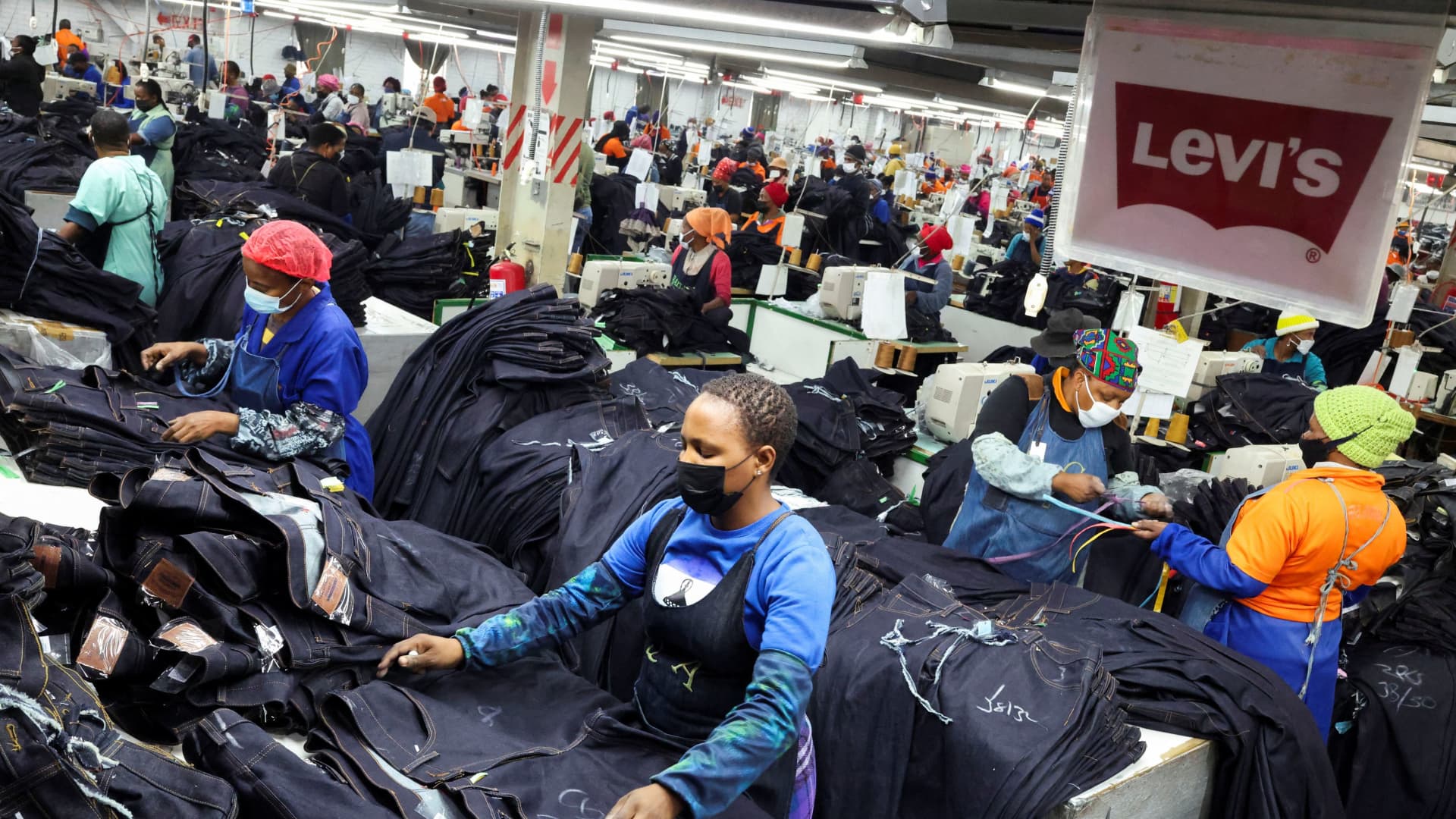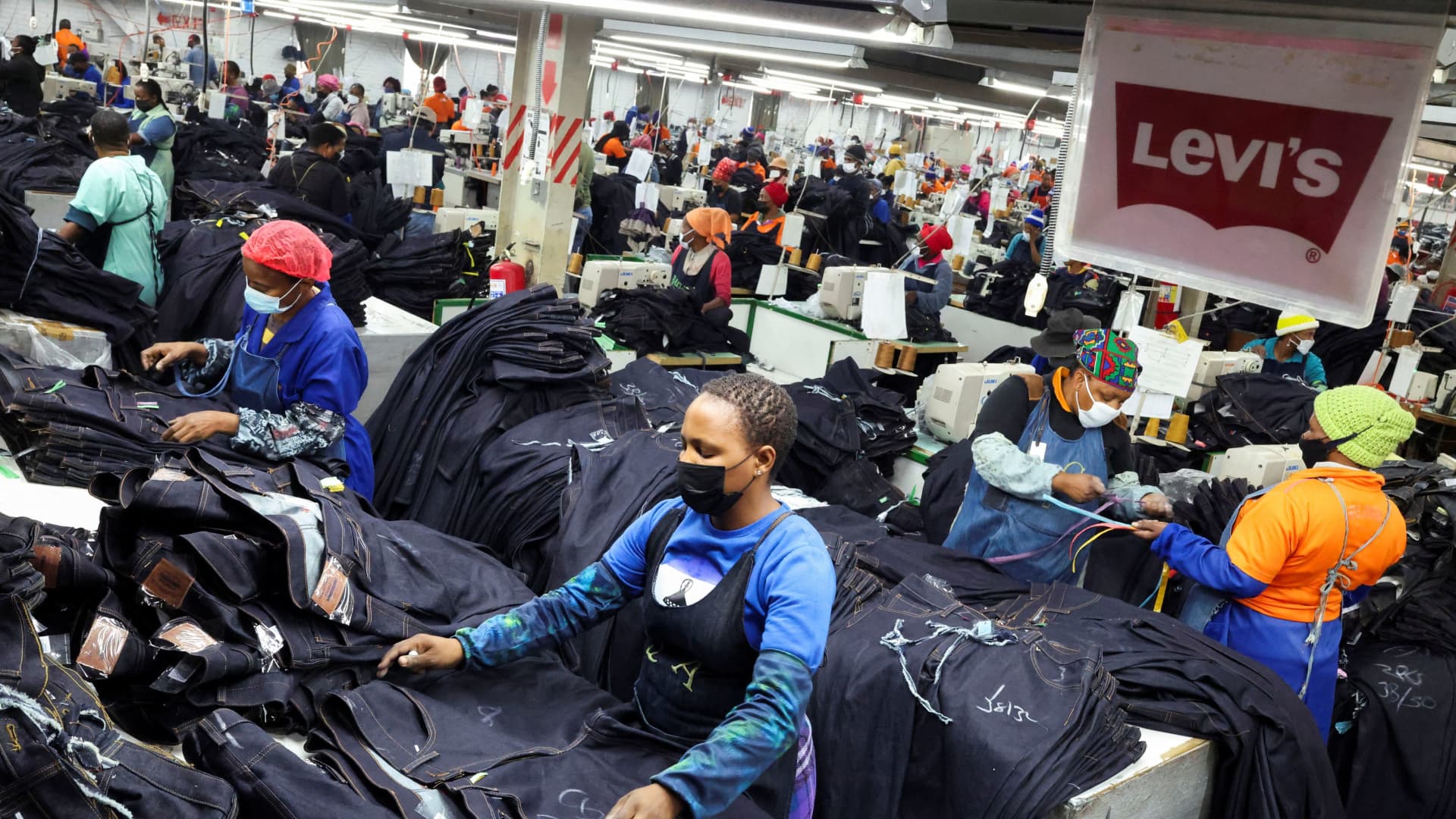Levi Strauss & Co., a name synonymous with denim, stands as a beacon of resilience in the face of the 2025 tariff storm. The iconic American brand, known for its timeless jeans, is navigating a complex economic landscape shaped by sweeping tariffs imposed by the Trump administration. These tariffs, designed to protect domestic industries, have inadvertently created a challenging environment for apparel companies worldwide. However, Levi Strauss is demonstrating remarkable adaptability, buoyed by strategic initiatives and a strong brand identity. This report delves into Levi Strauss’s response to the tariff challenges, its financial outlook, and the factors contributing to its ability to weather the storm.
The Tariff Threat: A Looming Cloud
The imposition of significant tariffs on imported goods presents a formidable challenge for the apparel industry. These tariffs, essentially taxes on imports, increase the cost of raw materials and finished products, potentially squeezing profit margins and forcing companies to raise prices for consumers. Small and medium-sized businesses, often lacking the resources to absorb these costs, face a disproportionate burden. The uncertainty surrounding the duration and scope of these tariffs further complicates matters, making it difficult for companies to plan and invest strategically. The potential for retaliatory tariffs from other countries adds another layer of complexity, creating a volatile and unpredictable trade environment.
For Levi Strauss, the tariffs pose a significant threat, particularly in its reliance on imported materials and finished goods. The company sources a substantial portion of its denim fabric from overseas, making it vulnerable to tariff-induced cost increases. Additionally, the company’s global supply chain, which spans multiple countries, is susceptible to disruptions caused by retaliatory tariffs. Despite these challenges, Levi Strauss has adopted a surprisingly confident stance, maintaining its full-year outlook and demonstrating a willingness to absorb some of the tariff costs, at least in the short term.
Levi’s Defiant Stance: Maintaining Course Amidst Uncertainty
Despite the looming threat of tariffs, Levi Strauss has adopted a surprisingly confident stance. The company has maintained its full-year outlook, explicitly excluding any significant impact from the new tariffs. This decision reflects a combination of factors, including strong revenue growth, strategic cost management, and a willingness to absorb some of the tariff costs, at least in the short term. Levi’s Chief Financial and Growth Officer, Harmit Singh, has drawn parallels to the challenges faced during the pandemic, suggesting the company’s experience in navigating turbulent times.
Levi’s approach to potential price increases is described as “surgical,” indicating a willingness to selectively adjust prices only when necessary. This measured approach aims to minimize the impact on consumers while protecting the company’s profit margins. CEO Michelle Gass has emphasized the brand’s strength and its ability to navigate these challenges. “Our brand is resilient, and our customers are loyal,” Gass stated in a recent earnings call. “We have the flexibility to adjust our pricing strategy as needed, but we are committed to maintaining the value proposition that has made Levi’s a trusted name for over a century.”
Strategies for Success: Riding the Denim Wave
Several key factors contribute to Levi Strauss’s ability to withstand the tariff pressure. These include:
Diversification and Innovation
Levi Strauss has been actively diversifying its product offerings beyond its core denim jeans. The company’s focus on a “head-to-toe denim lifestyle” includes expanding into new categories like dresses, skirts, and wide-legged jeans. These efforts are paying off, as the company successfully attracts new customers and capitalizes on evolving fashion trends. This diversification reduces the company’s reliance on specific product lines and mitigates the impact of tariffs on individual items.
For instance, Levi’s recent launch of the Levi’s Made & Crafted line, which features premium denim and non-denim apparel, has been well-received by consumers. This line not only expands the company’s product portfolio but also targets a higher-end market segment, allowing Levi Strauss to command premium prices and offset some of the tariff-induced cost increases.
Direct-to-Consumer (DTC) Growth
Levi Strauss is experiencing significant growth in its direct-to-consumer business. By selling directly to consumers through its own stores and online channels, the company can capture higher margins and build stronger customer relationships. This strategy provides greater control over pricing and promotions, allowing Levi Strauss to respond more effectively to tariff-related cost increases. The company’s Q1 results showcased a 9% organic revenue rise, record gross margins, and robust DTC growth.
The shift towards DTC is not just a response to tariffs but also a reflection of changing consumer preferences. Today’s shoppers increasingly value convenience, personalization, and direct engagement with brands. By leveraging its DTC channels, Levi Strauss can offer a more tailored shopping experience, fostering brand loyalty and driving repeat purchases.
Strong Brand Identity and Pricing Power
Levi Strauss benefits from a strong brand identity and a loyal customer base. The Levi’s brand commands pricing power, allowing the company to pass on some of the increased costs to consumers without significantly impacting demand. This pricing power is further enhanced by the company’s decision to pull back on promotions, leading to more full-price selling.
The brand’s iconic status is a significant asset in times of economic uncertainty. Levi’s has a rich history and a deep emotional connection with its customers, making it more resilient to price fluctuations. Moreover, the company’s commitment to sustainability and ethical practices further strengthens its brand equity, attracting environmentally conscious consumers who are willing to pay a premium for responsible products.
European Demand
Strong demand for Levi’s denim in Europe is helping to offset some of the negative impacts of tariffs. The company’s ability to capitalize on global demand diversifies its revenue streams and reduces its dependence on the U.S. market. Europe, in particular, has shown a robust appetite for Levi’s products, driven by the region’s strong denim culture and the brand’s enduring popularity.
Levi Strauss has been strategically investing in its European operations, expanding its retail footprint and enhancing its digital capabilities. These efforts have positioned the company to capture a larger share of the European market, providing a crucial buffer against the tariff-induced challenges in the U.S.
Strategic Cost Management
While Levi Strauss is willing to absorb some tariff costs, the company is also actively managing its expenses to minimize the impact on its bottom line. This includes streamlining operations, optimizing its supply chain, and negotiating favorable terms with suppliers.
For example, Levi Strauss has been working closely with its suppliers to secure better pricing and terms, leveraging its strong brand and long-standing relationships. The company has also invested in supply chain technologies to improve efficiency and reduce costs. These initiatives not only help mitigate the impact of tariffs but also enhance the company’s overall competitiveness.
Financial Outlook: A Positive Trajectory
Levi Strauss’s financial performance reflects its resilience in the face of tariff challenges. The company has raised its full-year revenue guidance, now expecting sales to increase between 1% and 2%, significantly exceeding analyst expectations of a 5.2% decline. This positive outlook is driven by strong demand and successful execution of the company’s strategic initiatives.
While some analysts acknowledge that Levi Strauss is not entirely immune to cost increases or consumer spending slowdowns, the company’s strong Q1 results and optimistic outlook have boosted investor confidence. Levi’s stock price has rallied following earnings announcements, historically outperforming expectations.
The company’s ability to maintain its financial trajectory amidst the tariff storm is a testament to its strategic agility and strong leadership. By focusing on its core strengths and adapting to the changing market dynamics, Levi Strauss has positioned itself for sustained growth, even in a challenging economic environment.
Potential Risks: Navigating the Uncertainties
Despite its positive performance, Levi Strauss faces several potential risks associated with the ongoing tariff situation. These include:
Increased Costs
Tariffs inevitably lead to increased costs, which can erode profit margins if not effectively managed. While Levi Strauss is currently absorbing some of these costs, there is a limit to how much it can absorb without impacting profitability. The company must continue to balance cost management with its commitment to quality and sustainability, ensuring that it does not compromise its brand equity in the process.
Consumer Spending Slowdown
Higher prices resulting from tariffs could potentially lead to a slowdown in consumer spending, particularly if tariffs are passed on to consumers. This could negatively impact demand for Levi Strauss’s products, especially if the economic climate worsens. The company must remain vigilant and adapt its pricing and promotional strategies to maintain consumer affordability and accessibility.
Retaliatory Tariffs
The risk of retaliatory tariffs from other countries remains a concern. If other countries impose tariffs on U.S. goods in response to U.S. tariffs, Levi Strauss’s export business could be affected. The company must closely monitor global trade dynamics and be prepared to adjust its strategies accordingly, ensuring that it can navigate the complexities of international trade.
Supply Chain Disruptions
Tariffs can disrupt global supply chains, leading to delays and increased costs. Levi Strauss needs to closely monitor its supply chain and take steps to mitigate potential disruptions. This includes diversifying its supplier base, investing in supply chain resilience, and leveraging technology to enhance visibility and efficiency.
Conclusion: A Testament to Brand Strength and Strategic Agility
Levi Strauss’s response to the tariff challenges serves as a testament to the company’s brand strength, strategic agility, and effective leadership. While the tariff situation remains uncertain, Levi Strauss has demonstrated its ability to navigate these challenges through diversification, direct-to-consumer growth, strong brand identity, and strategic cost management. By maintaining its full-year outlook and raising revenue guidance, Levi Strauss is sending a clear message that it is well-positioned to ride the denim wave, even in the face of a tariff tempest.
The company’s success lies not just in its iconic jeans but in its ability to adapt, innovate, and lead in a rapidly changing global marketplace. As the world continues to grapple with economic uncertainties, Levi Strauss stands as a beacon of resilience, proving that a strong brand and strategic foresight can weather even the most turbulent storms. By staying true to its core values and embracing change, Levi Strauss is poised to continue its legacy of excellence and innovation, ensuring its place as a leader in the denim industry for generations to come.












